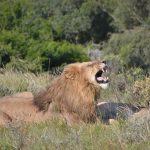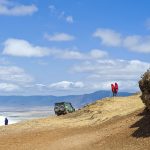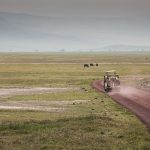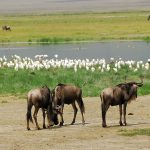Ngorongoro Crater is the jewel located within the larger Ngorongoro Conservation Area (NCA). The NCA is the world’s first multi-purpose land use area. The goal of the NCA is to host tourism, research and conservation efforts, allow local inhabitants access to ancestral grazing land, and protect past and current archeological sites for further exploration.
Within this large area that stretches from the Ngorongoro Forest in the Karatu region all the way to the Serengeti, lies the Ngorongoro Crater—one of seven designated World Heritage Sites in Tanzania and the world’s largest intact, unflooded caldera. This means that the entire rim of the old volcano remains intact. The Crater is only 12 miles wide and 100 square miles in total, with the floor at an elevation of 5,600 feet and the rim of the Crater walls reaching an additional 2,000 feet in elevation.
[smart-grid row_height=”240″ mobile_row_height=”170″ last_row=”justify” margins=”15″ captions=”false” title=”false”]
[/smart-grid]
The Crater floor provides six distinct habitats: acacia forest, swamp, short grass, long grass, riverine and woodland. Each habitat attracts a variety of animals. The Crater is home to almost 30,000 animals in an area naturally enclosed by the slopes of the volcano.
Despite the high walls of the Crater, approximately 20% of the herd animals do migrate in and out. However, the lion population remains rather steady at between 55-65animals. The lions of the Crater lack genetic diversity because new males do not venture down into the Crater to challenge the males dominating the Ngorongoro’s now in-bred prides. The Ngorongoro Crater boasts the highest density of hyena in any location in Africa.
The Crater is one of the best locations for viewing black rhino and the huge old bull elephants. There is not enough vegetation or shade to support large cow and calf herds but old males “retire” to the Crater for the wonderful swamp grass and acacia forest. The only animals you will not see in the Crater are the impala and giraffe.
There is insufficient food for the impala and giraffes are unable to descend the steep grade without lowering their heads, which raises their blood pressure to dangerous levels. Birding in the Crater is a delight, with over 500 recorded species and easy access to different habitats all within close range of each other. Look for the golden-winged and Tacazze sunbirds, Rufous-tailed weavers, Jackson’s widow bird and the pallid harrier, as well as the grey-crested Helmut shrike and the beautiful crowned cranes.






